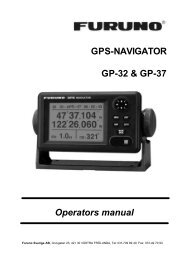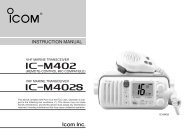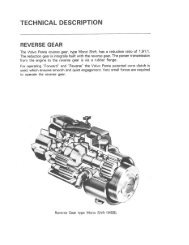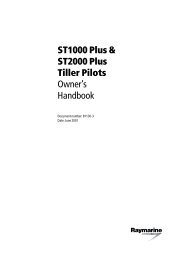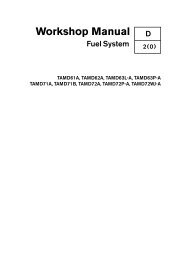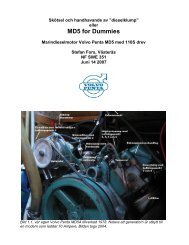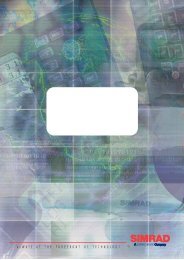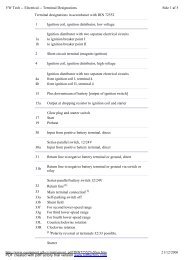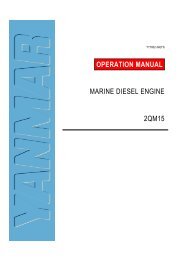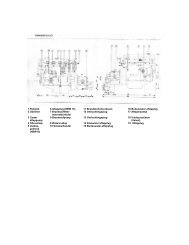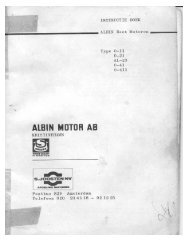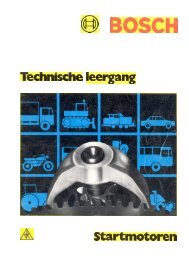Create successful ePaper yourself
Turn your PDF publications into a flip-book with our unique Google optimized e-Paper software.
Chapter Nine<br />
Electrical System<br />
All engines covered in this manual are equipped with a<br />
12-volt, negative-ground electrical system. Many electrical<br />
problems can be traced to a simple cause such as a<br />
blown fuse, a loose or corroded connection, a loose alternator<br />
drive belt or a frayed wire. While these are easily<br />
corrected problems that may not appear to be important,<br />
they can quickly lead to serious difficulty if allowed to go<br />
uncorrected.<br />
Complete overhaul of electrical components, such as<br />
the alternator or starter motor, may not be practical or economical.<br />
In some cases, the necessary bushings, bearings<br />
or other worn parts are not available for individual replacement.<br />
If tests indicate a unit with problems other than those<br />
discussed in this chapter, replace it with a new or rebuilt<br />
marine unit. Make certain, however, that the new or rebuilt<br />
part is an exact replacement for the defective one removed.<br />
Also be sure to isolate and correct the cause of the<br />
failure before installing a replacement. For example, an<br />
uncorrected short in an alternator circuit will most likely<br />
burn out a new alternator as quickly as it damaged the old<br />
one. If in doubt, always consult an expert.<br />
This chapter provides service procedures for the battery,<br />
charging system, starting system and switches.<br />
Wiring diagrams are included at the end of this book. Table<br />
1 and Table 2 are located at the end of this chapter.<br />
NOTE<br />
Except where speczjied, F and D series engines<br />
are included when a basic model number<br />
is speczjied. For example, ifmodel 3GM<br />
is called out in a procedure, the procedure<br />
also applies to 3GMD and 3GMF<br />
BATTERY<br />
Because batteries used in marine applications endure<br />
far more rigorous treatment and are often used differently<br />
than those used in an automotive charging system, they<br />
are constructed differently. However, battery advancements<br />
developed for automotive batteries have been applied<br />
to marine batteries. This has resulted in new battery<br />
designs that provide the boater with more choices. A battery<br />
may be selected that better accommodates the electrical<br />
requirements for the engine and the boat's accessories<br />
than the typical older, wet-cell battery designs.<br />
If buying a new battery, consult with a marine dealership<br />
that sells a full line of marine batteries. To obtain the<br />
best advice, provide the engine model and a list of electri-




